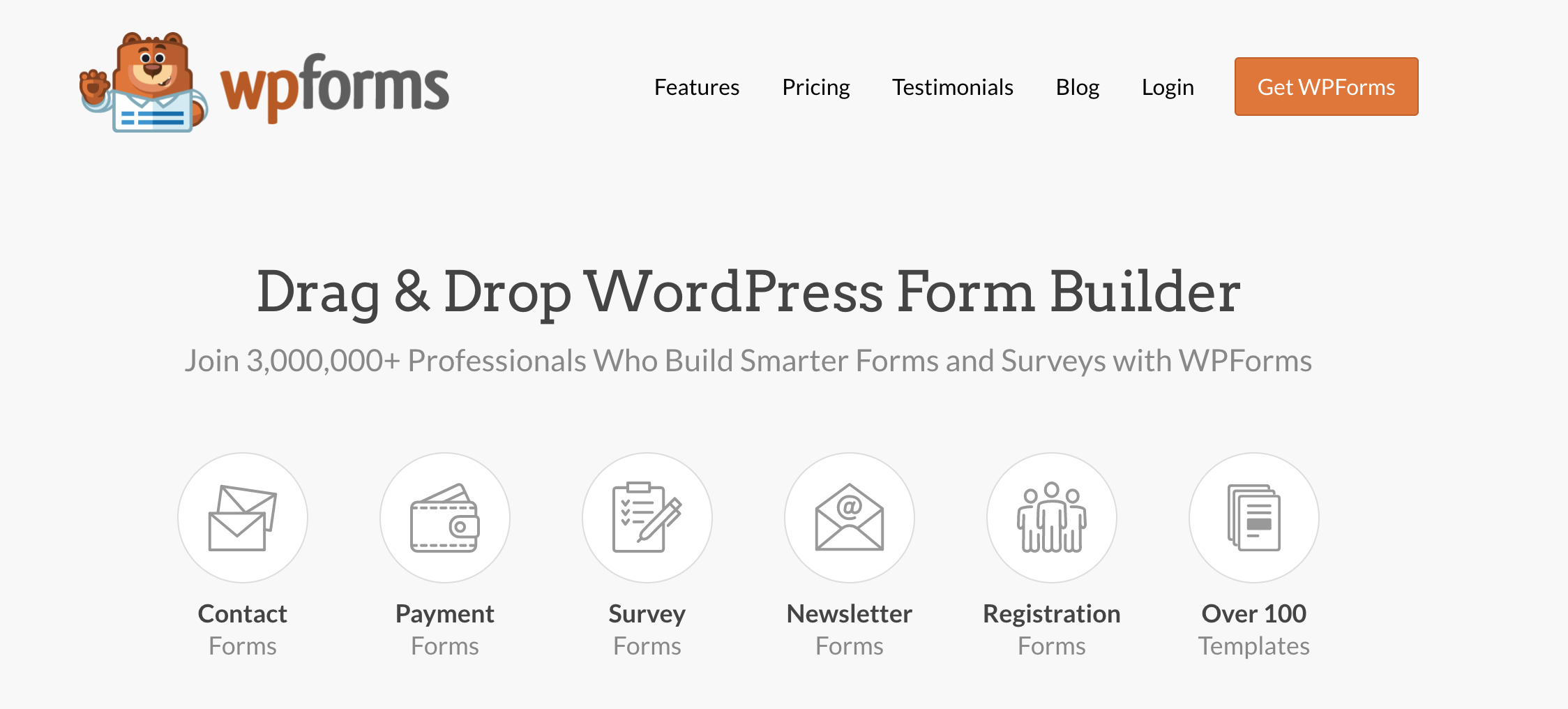Do you want to enable WooCommerce Recurring Payments and set up an eCommerce store right away? How about taking that crucial first step towards the popular and profitable subscription business model?
By WooCommerce recurring payments, we don’t mean subscriptions for WooCommerce dealing with a subscription product (while both are similar and are fundamentally the same).
WooCommerce Subscriptions usually mean (in our case) selling bundled products (physical or digital) for a regular subscription amount charged weekly or monthly. Popular business models that lend themselves well for this model are online subscriptions for products.
Note: In the general sense of the term (and the business models themselves), both WooCommerce Subscriptions and WooCommerce Recurring Payments are interchangeable terms since the idea is still the same. In most cases, WooCommerce Subscription Plugins meant for subscriptions will work for WooCommerce recurring revenue as well.
In other cases, special WordPress forms (integrated with the necessary Payment Gateway) will also work to help you launch variable subscriptions, invoices and receipts, renewals, virtual products, and even physical products.
Digital subscriptions lead the way when it comes to this model (such as Netflix and Spotify) but here are a few businesses that offer subscription models for buying physical products (or even rent physical goods):
- The Beard Club
- Birchbox
- Renttherunway
- NY & C Closet, By NY & Company
When we talk about WooCommerce recurring payments, we mean to address scores of Individuals who want to enable recurring payments for their ongoing services or other offerings which have fixed but recurring billing (or prorated billing) such as bloggers, self-employed professionals of all types including freelancers, artists, creators, developers, and several small and medium-sized businesses of all kinds.
WooCommerce Recurring payments are great for local businesses who want to think creatively about how they offer products and services. You can also think about WooCommerce recurring Payments or recurring billing when you want to explore the world of “productized services”.
A productized service is when an individual or a small business wants to provide services packaged in a way that lends itself to being almost a “product” — customers know exactly what they are buying and what they get for the price they pay.
Think of all the things that were originally services of various kinds but can be repackaged as products:
Pre-defined services, with clear deliverables based on services offered, are a step-up from the usual service model. ProductizedStartups has at least 100 examples of productized services that you could get your ideas from or for you to get inspired.
Why use WooCommerce Recurring Payments?
Before you answer a question such as to why bother using WooCommerce Recurring payments for your business, you should ask this: Why WordPress? Why WooCommerce?
According to Kinsta, WordPress powers more than 38.8% of the websites in the world and commands 60.8% of the CMS market.
While we are at it, WooCommerce is the quintessential, free, and popular choice to enable eCommerce on to turn a regular WordPress site into an eCommerce platform. WooCommerce powers 22% of the top 1 million eCommerce sites in the world.
So, why not?
Now, we know what you’ll ask next: Why WooCommerce Recurring Payments at all?
Quick question: Netflix, Spotify, Birchbox, Manscaped, What’s common for the following businesses?
They all have a “Subscription business model”. Recurring Payments (WooCommerce or not) is their bread-and-butter.
As the popularity of the model picks up, now several other businesses have joined the bandwagon: Amazon has “subscriptions” options for some of their products (especially for Amazon Pantry) and Apple with its Apple TV+, iPhone subscription model, and the latest Apple One.
It’s not surprising since the consumer mindset is changing globally. Businesses are only scrambling to meet that demand now.
Customers love the subscription model: it saves them money; brings value on an ongoing basis; allows them to build a long-term relationship with a brand. Further, subscriptions make it easier to transact, and it’s usually a “pay once and get value forever” scenario.
Ben Dalfen — CEO of PaySafe –– notes that at least 69% of American consumers have multiple subscriptions and 28% have at least four subscriptions with various brands. However, you should note that it’s far from an American phenomenon. A full 50% of Canadians have multiple subscriptions (Germany, the U.K., and Austria are close behind).
Subscription models are also good for business. According to Carl Gold, a chief data scientist at Zuora, the subscription economy index shows that subscription businesses — on average — are growing revenues 5X faster than S&P 500 revenues (18.2% vs. 3.6%) and U.S. retail sales (18.2% versus 3.7%).
WooCommerce Recurring Payments: The Ideal Use Case
First, let’s consider the ideal use case for the WooCommerce Recurring Payments (slightly different from WooCommerce for Subscriptions) which will be appropriate for individuals, one-person businesses, self-employed professionals (such as freelancers, artists, developers, and others).
- Bloggers, online publications, and magazines can provide services such as a dedicated niche job-board in exchange for a monthly recurring payment with WooCommerce (much like how Problogger does it with their job boards dedicated for businesses to find bloggers and writers). Other services — in exchange for recurring payments — could be advertising, accepting listings, etc.
- Small businesses that have a recurring payment model are an obvious choice to accept monthly recurring payments for gyms, yoga classes, training, coaching, consulting, and more.
- A dedicated platform meant for a niche audience (with a huge audience base) can provide exposure for others (also meant for that audience). For instance, Envato Elements takes a monthly recurring fee and allows you to download unlimited web assets related to Graphic design, WordPress plugins, WordPress themes, and more.
WooCommerce Recurring Payments: Top 5 Options For Recurring Billing
Most modern WordPress form builders are usually the first step to allow you to pick up instructions or inputs from clients and also allow them to purchase a recurring payment plan on WordPress. In other cases, your typical WordPress subscription plugins can also do the trick. In a few cases, different third-party SaaS products or hosted recurring payment solutions will also help.
Choose the right options depending on your business model itself, what you offer, and how you intend to charge your customers.
Here are a few popular and relatively easy ways to enable recurring payments for your business:
Stripe For WordPress

Using Stripe’s expansive knowledge base (not to mention a gazillion tutorials on YouTube), you can make recurring payments work without using any WordPress plugins (or other tools at all).
Note: this approach takes some (or a lot of..) work, getting your hands dirty with code, and time. WooCommerce settings, beyond a certain point, are beyond the scope of regular users.
Further, Stripe’s API with WooCommerce isn’t straightforward and does not use the full power of Stripe’s recurring payments with WordPress. In fact, if you intend to use Stripe with the WooCommerce Subscription plugin (above), the plugin only uses the Stripe Customer and Card token and controls the processing of recurring payments.
According to WordPress support forums:
“…This avoids any potential issues that could occur by trying to keep two copies of each subscription’s data in sync on two different systems (one in your store and one at Stripe). It also makes it possible for Stripe to support all of WooCommerce Subscriptions’ features, like payment date changes, rather than only those the Stripe Subscriptions allows.”
“Because of this, you will not see subscriptions created with WooCommerce in your Stripe Dashboard as Subscriptions. This does not mean recurring payments will not be processed. As long as your store is running correctly, recurring payments will be processed correctly and will show up in the Stripe Dashboard as Payments. ”
If you are not technically inclined to directly use Stripe with WordPress, we highly recommend you use any of the other options here or choose to work with one of the many WooCommerce subscription options available. See our post on Top WooCommerce Subscription Plugins
Paypal For WordPress

We’d like to think that while PayPal has been around for a long time, it’s easily the next best option for you (if it’s available for you to use in the country you operate out of). There’s the recurring PayPal invoicing (but we want you to go beyond manual invoicing or even automated invoicing).
With something as simple as PayPal recurring payments, you could be all set up and good to go if that’s all that your business needs. There’s no need to complicate things when you don’t really have to.
Note that there are several plugins to help you with direct integrations with PayPal. Almost all of the WooCommerce Subscription plugins, several SaaS applications, and third-party services can help as well. If you are looking for PayPal recurring payment WordPress plugins, A few of the notable ones include PayPal Recurring Payment Processing, WordPress PayPal, and Paid Memberships Pro.
Mark Thomson of PayKickStart has a handy guide on how to start with PayPal Recurring Payments.
If you are new to the world of WordPress eCommerce, we have a handy, step-by-step guide to help you start a WordPress eCommerce site.
The WooCommerce Subscriptions Plugin

The WooCommerce Subscriptions plugin is usually the first port of call if you use WordPress and WooCommerce combination and if you want to enable recurring payments on WordPress.
The WooCommerce Subscriptions plugin is usually the first choice for several people who base their businesses on WordPress eCommerce.
Here are a few of the features that make WooCommerce Subscriptions a great choice (if you don’t mind the price of US $199/year (billed annually) for the privilege.
- You can create and manage products with recurring payments, directly based on your WooCommerce setup. If you are providing services, you’d have to set up your services, coaching or consulting packages, etc., as packaged or productized services. You can also sell subscription plans, subscription products by using WooCommerce.
- You can offer free trials or charge a small token amount as advance (depending on your business).
- The automatic recurring payments on WordPress are powered by direct integrations with over 25+ payment gateways (starting with the popular ones such as Stripe and PayPal) to power your subscription payments.
- The flexibility of billing schedules: launch payment cycles daily, weekly, monthly, and fortnightly. You can even choose to charge at the end of every 2nd week or at the end of every 3rd month. The floor is all yours.
- The WooCommerce Subscription plugin can also help you recover potentially lost revenue by helping you with automatic re-billing on failed subscriptions or to help you with automatic renewals.
- You also get access to handy notifications and alerts such as payment notifications, rebill notifications, failed subscriptions, and more.
- With the WooCommerce Subscription plugin, you can easily launch simple and variable subscriptions, allow your subscribers or customers to upgrade, downgrade, or cancel subscriptions by themselves (by signing into their dedicated member area).
- Get access to dedicated reports to enable you to keep track of important business metrics for your subscription-based business.
The WooCommerce Subscription plugin is usually the starting point for millions of WordPress users looking to enable WooCommerce recurring payments. Yet, it’s only the beginning.
Looking for other WooCommerce Subscription plugins that can help? Check out our post on Top WooCommerce Subscription Plugins
WPForms

WPforms is a fantastic form-builder but it’s not just what it sounds like. It also helps you spin-off several different forms to enable even more related business ideas.
Apart from the usual contact forms, registration forms, and surveys, WPForms can do a lot more.
For instance, instead of the usual back and forth — that’s common for service businesses — a typical agency or a freelancer can create forms that allow clients to leave a short brief with necessary files along with making payments on the form itself.
Or, with WPForms, you could create forms using conditional logic and create smart, dynamic forms that show or hide fields (based on user input), make payment options show up, and even make the form fields change based on the use case or data fills.
Particularly in the use case for creating subscription forms on WordPress, you can use WPforms to either create conditional forms or simple forms (with payment integration) to launch your subscription-based business.
To create Recurring Payments on WordPress, all you have to do is to create a new form with WPforms, customize your form fields (depends on your business), bolt-on payment gateways that you work with (easily enabled within WPforms), and you are good to go.
Here’s a detailed guide on how to setup WooCommerce recurring Payments
Some of the best features of WPForms are as follows:
- You don’t have to start from scratch as WPforms has virtually all sorts of form templates that you could start with.
- A comprehensive tool that you can not only use to create Subscription forms (stitch it the way you deem fit for your business) but also to create registration forms, lead generation forms, surveys, and regular contact forms.
- Make use of powerful add-ons such as PayPal add-on, Stripe Add-on, or Authorize.net Add-on to enable eCommerce on WordPress.
- Apart from the ability to launch WordPress subscriptions with dedicated entry forms, you can also create multi-page forms, enable file uploads, allow user registration, allow users to digitally sign documents or agreements, and more.
- Integration with the most common payment gateways is built-in, without you having to mess with code.
Yes, WPForms is a WordPress form plugin primarily. But it’s evolved a lot and it can essentially do what even more expensive WooCommerce Recurring Payments tools or plugins cannot.
MoonClerk

Most checkout experiences that are a result of using WordPress Recurring Payments using WordPress plugins are buggy, slow, and problematic. This is also the reason why we also emphasize third-party plugins and SaaS businesses (along with the likes of Shopify) in addition to WooCommerce Subscription plugins for WordPress to sell subscription products, subscription plans, or to enable recurring billing.
MoonClerk is a nifty, nimble, and easy-to-use plugin that helps you accept recurring payments, one-time payments, and even donations by just creating recurring payment forms and then dropping a shortcode wherever you want on your website after you connect with your payment gateway of choice.
When you use MoonClerk, your customers get a smooth, fast, and secure checkout experience without even having the need to create accounts or to set up passwords. MoonClerk also provides other features like express checkout with mobile wallets.
As a user, you can completely brand MoonClerk forms, add your logo, and customize the checkout experience (along with setting up necessary form fields that make sense for your business) to sell your services or even subscription products along with automatic renewals.
Apart from integration with common payment gateways, Make use of the security and peace of mind that MoonClerk provides such as anti-fraud measures, SSL Encryption, SCA compliance, GDPR compliance, and PCI-DSS compliance.
Conclusion: Are Automatic Recurring Payments The Solution You Need?
Sometimes, cookie-cutter solutions might not work for you, depending on what you are looking to use WordPress Recurring Payments for.
Not all businesses are the same. However, most businesses will fall into the category use case of having to charge a one-time or on a recurring basis.
You’ll have to spend some time looking for the right kind of WooCommerce or WordPress Recurring Payment Solution that works for your business.
No said it’s easy to use WooCommerce.
If you are looking for specific WordPress Plugins for enabling Bookings, see what our Templatic Booking plugin can do for you. We also have a dedicated plugin that can help you to enable appointments on WordPress.
Want to sell digital downloads? Take a look at the Digital Downloads WordPress Plugin from Templatic
You may also like:
- 30+ Best WooCommerce WordPress Themes
- How to Setup WooCommerce Bookings to sell Bookable products on your WordPress Website
- Must Have WooCommerce Plugins & Add-ons For WordPress Ecommerce
- WooCommerce Subscription Plugins for creating online subscriptions based websites
- How to make eCommerce website with WordPress: Step by Step Guide

